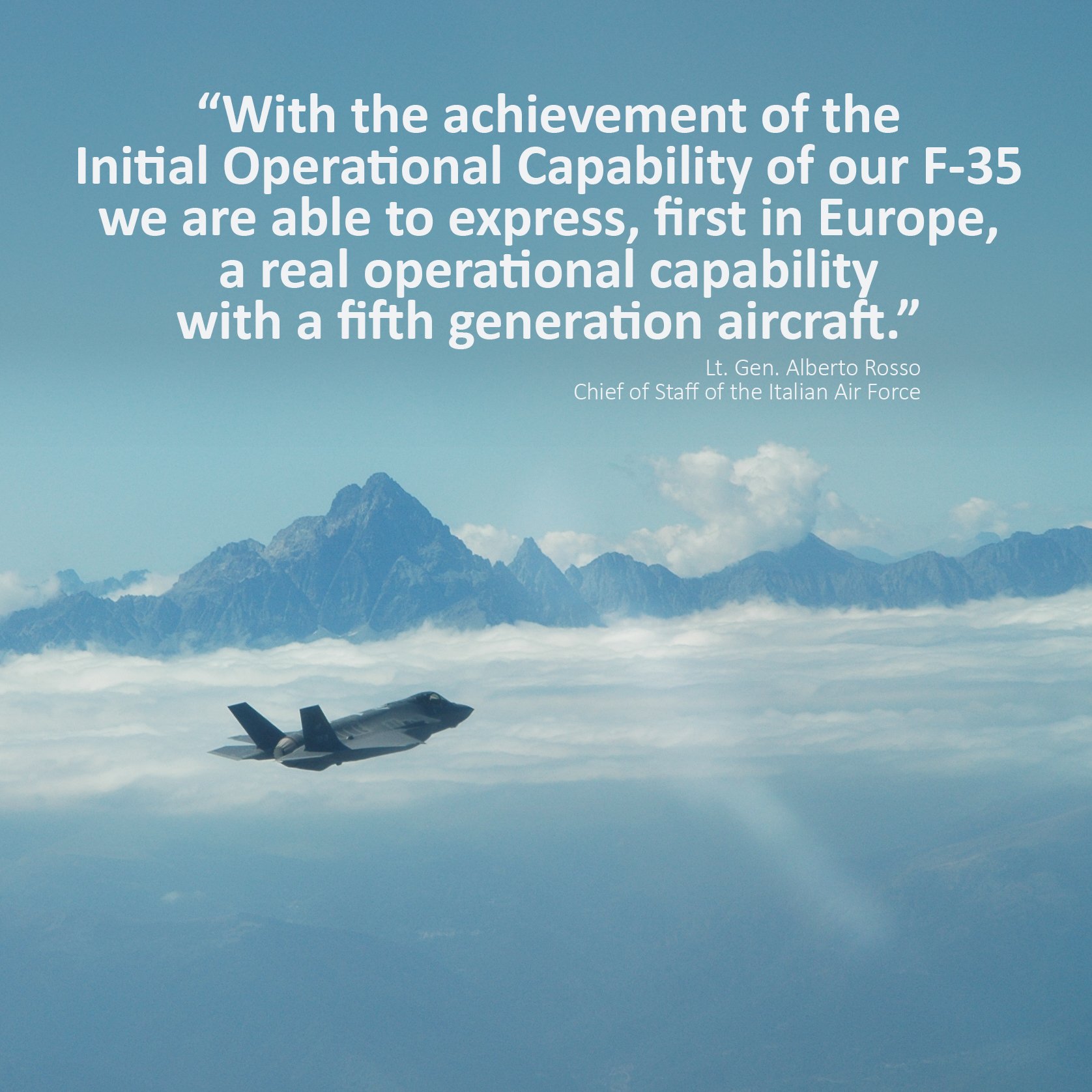Some interesting work being done at Miramar to maintain energy security. Also interesting that the F-35B uses 150% of the energy of the legacy Hornet. Makes sense given the increased electrical architecture used in the jet and the trend was that the legacy Hornet used 150% of the energy required for the aircraft it replaced.
The F-35 Lightning II jet will hike Marine Corps Air Station (MCAS) Miramar’s utility costs by 150 percent compared to legacy F/A-18 Hornets, an expense driven by greater power requirements to maintain and operate the highly complex, fifth-generation aircraft, a senior official told a group of energy officials.
But an expanding micro-grid and alternative energy projects could take a bite out of that bigger bill when the F-35 comes online by 2020, Col. Charles B. Dockery, the MCAS Miramar commander, said at a briefing Dec 3.
“We know already our F-35 hangars are burning about 150 percent more energy than the standard Hornet or Harrier hangar that I grew up in, so that’s a concern,” he told California Public Utilities Commission and California Energy Commission members who joined state, city and energy firm representatives for a two-day conference at the San Diego base.
Existing, older hangars can’t fully support the modern, multimission joint strike fighter, which requires hangars with upgraded electrical support. The Marine Corps is in the process of retrofitting, building or planning for hangars to support the F-35 at its fixed-wing air stations, including Yuma MCAS, Arizona, and Beaufort MCAS, South Carolina, that house the first F-35 operational and fleet replacement squadrons.
The F-35’s advanced electronics, navigation, avionics, communications and weapons systems are designed to be a leap in technology and combat power, but the jet is a power hog of sorts when grounded. Compared to legacy aircraft, it draws on more power for maintenance checks, repairs and operations when on the apron or inside hangars, so these must have the proper electrical connections, data networks, communications links, and heating, ventilation and air conditioning systems in aircraft bays.
“There’s infrastructure that is required to do some specific maintenance on the lift fan of the aircraft or [that] it requires conditioned air as part of that process,” Dockery said, in response to a question about the F-35’s increased power support requirement.
“This is a story that’s going on across the Navy as we try and rise to this new global power competition,” said John A. Kliem, a retired captain and civil engineer and executive director of the Navy’s Resilient Energy Program Office.
Miramar’s first F-35 hangar is currently under construction and is slated for completion in late 2019. It’s one of nine construction projects planned at the air station to support the F-35.
The Marine Corps is buying the single-seat F-35 Lightning II — the F-35B with short-takeoff-and-landing capability and the F-35C for land and shipboard operations — to replace its fleet of Hornets, AV-8B Harriers and EA-6B Prowler jets. So far, the Marine Corps has two F-35 squadrons based at Yuma MCAS and another squadron at Iwakuni MCAS, Japan.
The first F-35C and F-35B jets are scheduled to arrive at Miramar starting in 2020, with Marine Fighter Attack Squadron 314 transitioning from the F/A-18 Hornet to the F-35C and VMFA-225 from its twin-seat F/A-18D Hornets to the F-35B, according to the 2018 Marine Aviation Plan.
Dockery, a veteran F/A-18 naval flight officer, said energy costs for 2020 “is always in the back of my mind.” It’s among several energy-related and budgetary challenges the air station faces as it looks to stay capable, relevant and modernized to support operational forces.
Two-thirds of the Marine Corps and Navy’s air-to-air and air-to-ground and live-fire training ranges are located within one flight’s distance from Miramar, located in northern San Diego. That location makes Miramar critical to support military training and project joint forces across the Indo-Pacific region. “We help 3rd MAW [Marine Aircraft Wing] project their aircraft ... so they can maintain their ready and lethal force to deploy,” he said.
Just last year, utility costs forced Miramar, headquarters of the 3rd MAW, to shift $1.5 million to cover its utility budget, Dockery said. “I don’t see that changing through FY19.”
To add to that worry, expected cuts coming in the next Department of Defense’s budget, as well as shrinking Navy capital funding, could lead to more belt-tightening moves in the fiscal 2020 budget. That outlook may worsen in the face of likely higher energy costs, a trend of climbing rates that affect all military installations. This is compounded by aging installation infrastructure.
“We haven’t seen a lot of spending increases on the installation side,” said Dockery. “We are constantly almost doing triage to make sure we are fixing the right things on time.”
But Miramar officials hope that the Navy and Marine Corps’ investments in renewable, “green” energy innovations, along with more efficient fossil-fuel systems, will offset rising costs, including tapping into landfill gases for electricity and beefing up its micro-grid.
“We have some opportunities out there ... that’s not only going to keep my costs down but is also going to make me energy resilient,” Dockery said.
A $20 million investment by the Defense Department is helping help shore up that resiliency, officials say.
In recent years, Miramar demonstrated a micro-grid to help find ways for installations to become more energy efficient and build energy resiliency to reduce costs and enable continued operations when the power grid goes down.
“If everything goes dark, I need something I can turn on right now,” Dockery said.
Miramar already buys 3.2 megawatts of electricity — one megawatt is enough to power 750 to 1,000 homes — from San Diego Gas & Electric, the local utility provider. A backup power plant will provide to up 7 megawatts of power from four diesel and natural-gas generators to power the air station’s flightline and more than 100 buildings nearby.
“So when SDG&E goes dark, I’m still launching and recovering airplanes,” said Dockery.
This year, Miramar received a $5 million California Energy Commission grant to store up to 3 megawatts of energy in the installation micro-grid with backup batteries.
By next year, Miramar will draw from a mix of energy sources, including electricity and natural gas from the regional power grid; electricity generated by solar and methane gas from the adjacent San Diego landfill and integrated into the air station’s micro-grid; and a building-level, $3 million micro-grid project with a large solar array and batteries to power the station’s Energy & Water Operations Center building off-grid, or in “island mode.” The Marine Corps also is boosting its collection and use of reclaimed water, which reduces the amount of pricier potable water that Miramar purchases, and a water project agreement with the city of San Diego is expected to improve water quality and water resiliency at Miramar, officials said.
“Resilience is a solution that involves all of it,” Mick Wasco, Miramar’s energy program manager, said in a briefing to the group.
“We had the renewables, but we had to bring in conventional power to make it all work,” he added. The addition of battery storage also will help provide “power quality” and consistent demand, filling in as needed with fluctuations in available renewable-power generation, he noted.
Lt. Col. Brandon Newell, who heads innovation projects for Marine Corps Installations-West, said the goal is to shore up critical infrastructure when most needed.
“Our vision — our aspiration — for resiliency for installations is that we can go 14 days, no matter what happens external to the base, (and) that energy, water, communications, food and logistics can support the mission that’s required of that base,” Newell said.
The Marine Corps also is boosting its collection and use of reclaimed water, which reduces the amount of pricier potable water that Miramar purchases, and a water project agreement with the city of San Diego is expected to improve water quality and water resiliency at Miramar, officials said.
“This is really a cool thing; the whole Navy is excited,” Kliem told the group, noting Miramar is the first DoD installation to sign an IGSA, or intergovernmental support agreement, with localities — it’s a congressional authority — to help build energy resiliency. “There’s a lot of things that can be done with this once we break the code on how to do this.”










